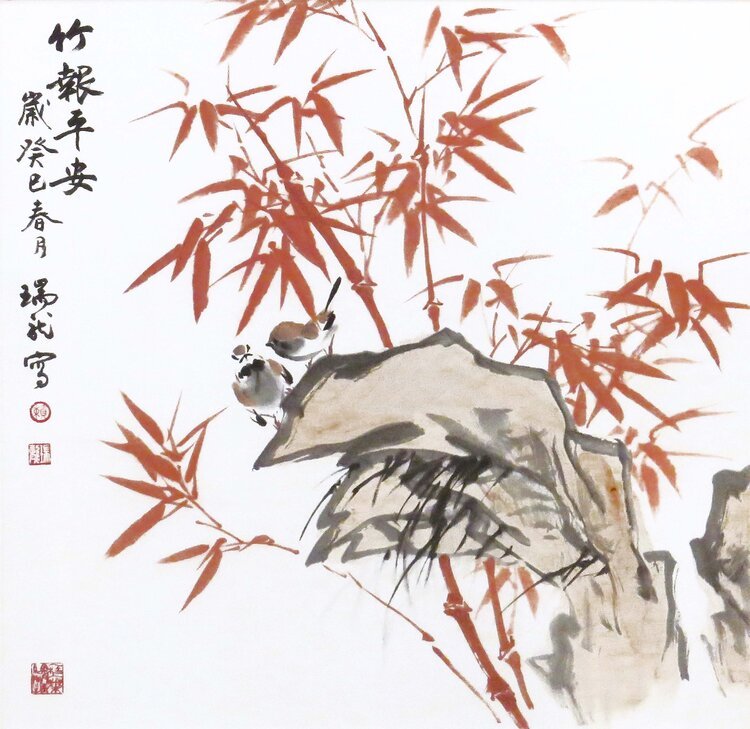These facts are taken from ‘Art of Chinese Brush Painting: Ink, Paper, Inspiration’, which introduces techniques developed over centuries to perfect the art of Chinese brush painting. The book also discusses in detail the brushes, paper and other tools and accessories needed in this craft.
The examples of artworks below are from our gallery.
1. In ancient times, people painted on leaves, split bamboo sticks or silk
Before the invention of paper, artists frequently had to be creative with what they painted on. Early silk was not very absorbent so the ink and paint had to be painted on the front and back. Furthermore, silk was also quite coarse and hard to paint on. However, even after paper was invented in 105 BC, many people still painted on silk. Silk weavers eventually started treating silk so it would be easier to paint on.
2. There are four common subjects in Chinese Brush painting.
In Chinese brush painting, there are four main classic painting subjects, known as The Four Gentlemen - bamboo, orchid, plum blossom and chrysanthemum.
This stems from Confucianism, where it is believed that all people should strive to achieve the ideal of a ‘gentleman’, which was a combination of a saint, scholar and nobleman. Some of the key virtues a ‘gentleman’ had to embody includes filial piety, loyalty, humanity and benevolence.
Each of The Four Gentlemen embodies in some way the virtues of a ‘gentleman’.
3. Asymmetrical composition is often preferred.
Often in Chinese brush painting, compositions are asymmetrical, and artists would purposely draw an odd number of flowers, leaves and other groupings to support this asymmetry. This asymmetry allowed for triangular areas of open space, which kept paintings simple and peaceful.
4. Painting has historically been affected by politics
The acceptance of and development of Chinese brush painting has always been tightly intertwined with political leaders and situations at the time.
During the Qin dynasty, when there was a restriction on individual thought, the creative arts also were suppressed. To execute a clean sweep of all Confucius’ teachings, the Qin emperor ordered the burning of all books except those on practical subjects. This would leave artists with oral transmission of their skills, and would result in the destruction of many artworks.
Similarly, during the Tang Dynasty - a period of political stability and prosperity, Chinese brush painting was able to quickly develop and improve. Emperor Xuanzong was a poet, musician, actor and painter himself, and this promoted the emergence of more styles and types of brushwork.
5. A good Chinese brush painting maintains a ‘yin-and-yang’ sort of balance.
The yin and yang philosophy suggest that yang is any positive principle in the universe, associated with heaven, light, strength and hardness, while yin is the negative principle, associated with earth, darkness, weakness and softness. However, both must be present in an equilibrium for there to be balance and harmony. This philosophy extends into Chinese brush painting. Often, a strong dark brush stroke is yang, while a pale stroke is yin. By having a balance of these two in a painting, the painting becomes harmonious.



